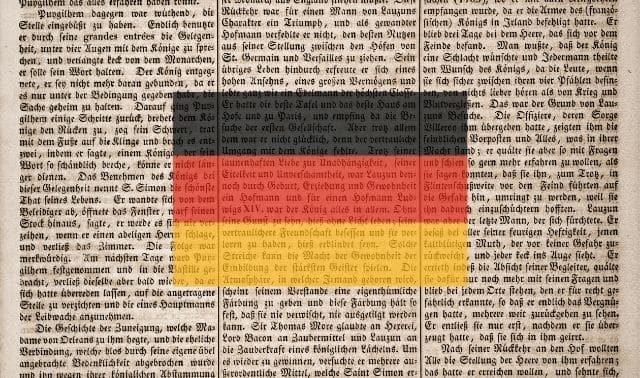Sign up for the Family Tree Newsletter Plus, you’ll receive our 10 Essential Genealogy Research Forms PDF as a special thank you!
Get Your Free Genealogy Forms
"*" indicates required fields

From one of history’s darkest eras has emerged a rich but controversial set of records that represents a potential genealogical windfall for some American researchers. As part of Adolf Hitler’s obsession with “purifying” the German race, young men who joined the in famous Schutzstaffel — the Nazi party’s military arm known as the SS — had to prove their genetic wholesomeness by submitting applications containing ancestor charts (Ahnentafeln in German). Similarly, starting in 1933, federal, state and local employees had to purchase Ahnenpasse from the Rasse und Siedlungs Hauptamt (Chief Office for Race and Resettlement). An individual had to get records showing his Aryan ancestry, then have a government official fill out this “ancestor passport.”

As World War II ended, American forces seized those files, along with other Third Reich records, and microfilmed them in Berlin. Some were invaluable in prosecuting Nazi officials and tracing owners of property taken from Holocaust victims. But the Ahnentafel films languished largely unnoticed in the National Archives and Records Administration (NARA). Then in 2003, German genealogy expert John T. Humphrey happened upon them, and they’ve become an all-consuming research and book-writing project.
“This totally unexplored record group has enormous potential for Americans and Germans looking for ancestral information, but they’re not readily accessible because they’re not indexed and all the records are in German,” says Humphrey, who encounters mostly German-speakers and professional historians during his NARA research sessions. “You need special skills to use them.”
ADVERTISEMENT
The files take up 7,800 microfilm rolls and document as many as 14 million people, since many of the charts stretch back six generations into the mid-1700s. They include vital records, medical information, correspondence and biographical details, as well as charts for prospective brides of SS members.
Humphrey realizes the history of the German SS surrounds these records with controversy and, for some whose ancestors are named in the charts, could cast a shadow over an otherwise heady research discovery. But he stresses their significance for studying earlier history. “These records have information on Germans born long before there was a Nazi party or an Adolf Hitler, and many of those Germans were the parents and grandparents of people who had immigrated to the United States,” he says. Even researchers whose ancestors aren’t named in the Ahnentafeln could benefit: Since certain surnames are unique to particular areas of Germany, the records could point to likely ancestral places of origin.
The original Ahnentafeln are in Berlin’s Bundesarchiv, where privacy laws keep them inaccessible. “Some people whose information is in these records aren’t too much older than I am,” Humphrey says. The microfilm—part of Record Group 242, Collection of Foreign Records Seized—is at NARA’s College Park, Md., facility. For more information on this record group, visit archives.gov/research/captured-german-records.
ADVERTISEMENT
A version of this article appeared in the May 2007 issue of Family Tree Magazine.
ADVERTISEMENT




